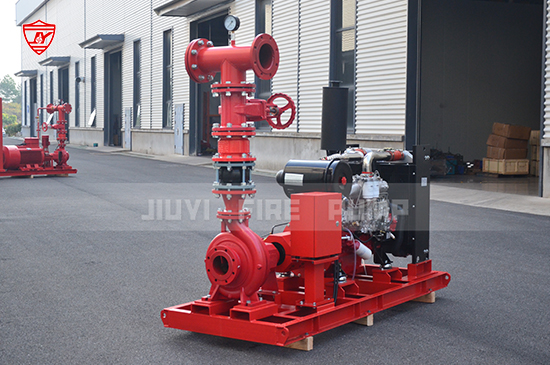Fire pump impellers are the heart of any fire pump system, responsible for moving water efficiently through the pump to meet emergency demands. However, over time, these components can suffer wear that impacts performance, safety, and compliance with standards like NFPA 20.
In this article, we’ll explore what impeller wear is, how it affects fire pump performance, and what steps you can take to monitor, prevent, and resolve it.

Impeller wear refers to the degradation or erosion of the impeller’s surface due to friction, cavitation, corrosion, or debris in the water. This wear reduces the pump’s ability to generate adequate pressure and flow, which can be catastrophic in emergency fire situations.
Abrasive Particles: Sand, silt, or debris in the water supply can erode impeller vanes.
Cavitation: Low suction pressure or high pump speed can lead to vapor bubble formation and implosion, damaging the impeller.
Corrosion: Chemical reactions, especially in saltwater or untreated water systems, corrode the impeller material.
Improper Alignment or Installation: Mechanical imbalance leads to uneven wear on the impeller edges.
Lack of Maintenance: Infrequent inspections and poor lubrication of moving parts increase wear rates.
Decreased flow rate or pressure output
Unusual noises during operation
Excessive vibration
Increased energy consumption
Visible damage during inspection
Reduced Fire Protection Efficiency: The system may fail to meet required water flow or pressure during a fire emergency.
Increased Operating Costs: Worn impellers lead to lower efficiency and higher electricity usage.
Shorter Pump Lifespan: Ongoing wear without correction leads to complete pump failure.
Regulatory Non-Compliance: Not meeting NFPA 20 standards could result in legal and insurance issues.
Routine Inspection: Follow a regular schedule to inspect impeller condition and measure wear.
Water Quality Monitoring: Install filters or screens to keep particles out of the system.
Balance and Alignment Checks: Ensure the pump is installed correctly and operates within design parameters.
Scheduled Overhaul: Replace impellers based on manufacturer recommendations or when wear is evident.
Partner with a Certified Manufacturer: Reliable pump manufacturers offer better materials, coatings, and support.
Impeller wear might seem like a minor issue at first, but it can have major implications for the reliability and compliance of your fire pump system. As a trusted fire pump manufacturer, we understand the importance of durable, well-maintained equipment. Choosing high-quality pumps and adhering to proactive maintenance routines will ensure your fire protection system is always ready when you need it most.